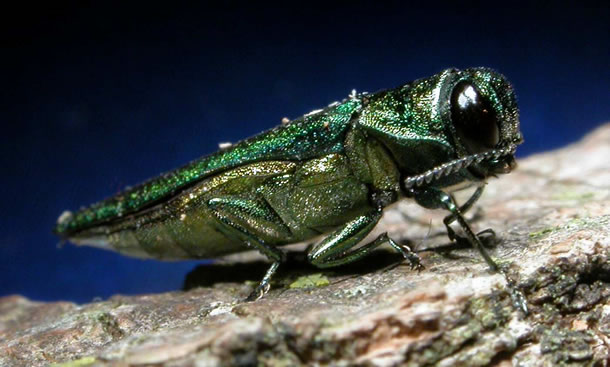Emerald Ash Borer – Perhaps the most destructive insect of this decade
Maybe you have heard of the Emerald Ash Borer already. This destructive little insect has been in the news quite a bit over the past few years as it has left tens of millions of dead Ash trees
Emerald Ash Borer Range
Removing wood from ash trees is restricted. Such quarantines have already been put in place in many of the affected states ( see map below) , as it is thought that the EAB’s primary means of spreading is through the movement of wood products and infected plant stock.

Identifying Emerald Ash Borer
EAB Is small, 1/2 long bright metallic green beetle with a flattened back. The EAB is bullet shaped and has purple abdomen beneath its wing that is visible during flight. The adult EAB emerge from under the bark from May to August to mate. This emergence will several D shaped exit holes along the stem of the tree. The females lay their eggs in the crevices of the bark. The larvae that hatch out then tunnel under the bark to feed and grow through out the fall and winter. this tunneling is what kills the tree as the tree’s vascular system is damaged and unable to transport water and nutrients for the tree.
Symptoms of Emerald Ash Borer infestation




